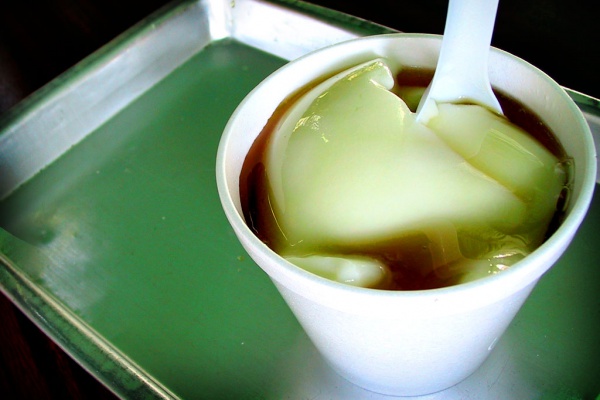Facts About Douhua
Douhua, also known as doufuhua, is a delightful Chinese snack made from exceptionally soft tofu. It may also be referred to as tofu pudding or soybean pudding. Tofu itself boasts a rich history dating back to ancient China during the Western Han Dynasty. Chinese cuisine features a myriad of tofu dishes, and douhua stands out as a delicious example, alongside others such as mapo tofu, stinky tofu, pickled tofu, steamed tofu, and unset tofu pudding.
Depending on the region in China, douhua can vary significantly in appearance and flavor. In Northern China, it is typically enjoyed with soy sauce. In Sichuan, it's served sans sugar but complemented with condiments like chili oil, soy sauce, and Sichuan pepper. In Hubei, it is sweetened with sugar. Cantonese cuisine often pairs douhua with sweet ginger or clear syrup, occasionally incorporating black sesame paste or coconut milk. In Taiwan, it's adorned with sweet toppings such as peanuts, adzuki beans, and syrups flavored with ginger or almond.
Douhua's appeal extends beyond China, reaching across Southeast Asia as well. In the Philippines, it is called taho and is served with sweet brown syrup. In Indonesia, it is known as kembang tahu or tahwa and is accompanied by palm sugar syrup. In Malaysia and Singapore, it's referred to as tau hua or tau fu fa and is often paired with sweet syrup or ginkgo seeds. Thai cuisine offers a unique twist by serving douhua with milk and fruit salad or ginger syrup. In Vietnam, it goes by various names and is enjoyed differently in the northern, central, and southern regions.
Making douhua involves using a coagulant, typically gluconolactone, to achieve its silky smooth texture. With its extensive history and diverse regional and international variations, douhua continues to be a beloved dish, offering a unique flair in every locale where it is made.

 Cambodia
Cambodia